9 Mistakes to Avoid Making as a Goldfish Keeper
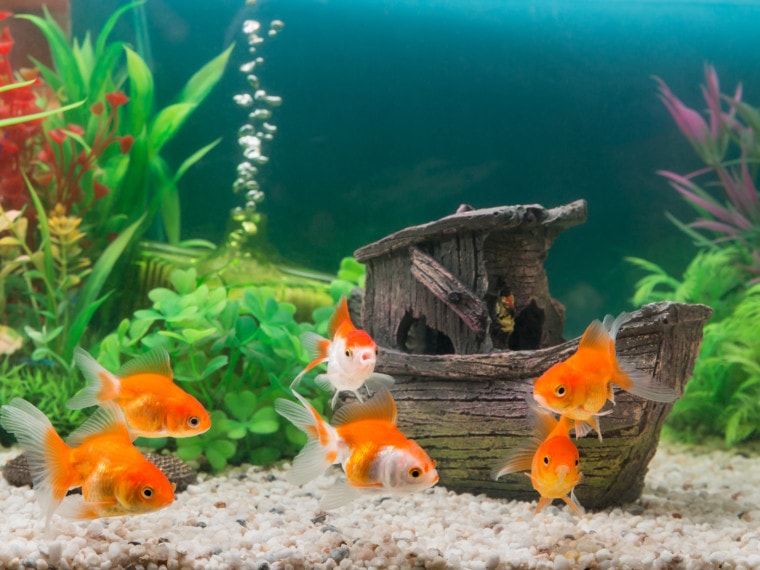
We all want to be the best goldfish keepers we possibly can be for our aquatic friends, and we all care a great deal about our goldfish and providing the happiest, healthiest life for them. While there are people who genuinely choose to remain willfully ignorant of proper goldfish husbandry, most people genuinely care and unintentionally make mistakes that are extremely common among new and inexperienced goldfish keepers.
If you are dealing with a sick fish or you’re attempting to remedy a mistake you made, it can be easy to beat yourself up, but there’s no need to! You’re here for information and education, showing you obviously want to do what’s best for your goldfish.

Give Yourself a Break!
We all make mistakes. Not only do we all make mistakes, but we all have to start somewhere, but not everyone starts in the same place. If your friend didn’t make the same mistakes as you, it doesn’t mean either of you are a better goldfish keeper than the other. All it means is that you both had different starting points with different levels of baseline knowledge.
Mistakes you may have avoided making could very well be the mistakes your friend is dealing with. The best we can do for our goldfish is to support and uplift each other, providing gentle correction and safe information to help all of us be the best goldfish keepers we can possibly be. To help you avoid some of the most common mistakes goldfish keepers make, keep reading!
9 Common Goldfish Keeping Mistakes:
1. Not Cycling the Tank
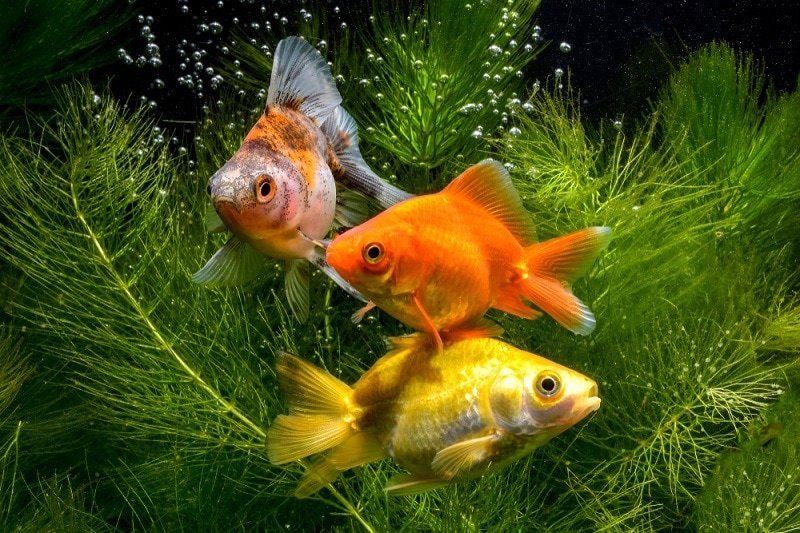
This is easily the most common mistake people make when it comes to keeping goldfish, or any other fish for that matter. Most people are used to the simplicity of going to the store, buying a bowl or tank and some fish, and taking it all home to get started. What science has taught us is that this doesn’t allow for proper tank cycling.
A tank cycle is the process of establishing beneficial bacteria colonies within the tank. These colonies live in the filter, substrate, and multiple other surfaces within the tank where water flows. Beneficial bacteria consume ammonia and nitrite, which are waste products from fish and decomposing organic matter, and convert them to nitrate. Nitrate is the end product of the nitrogen cycle and is the main reason we perform water changes in a fish tank (more on that later). Plants will help reduce nitrate levels in the tank as well, using it as a fertilizer for growth.
It is possible to perform a fish-in cycle, which means you already have the fish in the tank as you are cycling it. However, this is far from ideal. The main part of performing a tank cycle is allowing ammonia levels to become such that the beneficial bacteria have something to consume for energy, growth, and reproduction.
Ammonia and nitrite can both be damaging to fish, temporarily or permanently, and the ideal ammonia and nitrite levels for a tank with fish living in it is zero. As you can imagine, this makes it difficult to safely perform a fish-in cycle. There are products available that are bottle beneficial bacteria, which can help to jumpstart your tank cycling. These products are not an adequate replacement for performing a tank cycle, though.
Cycling your tank with or without fish can take days to months, depending on multiple factors. It’s a process that takes patience and diligence, especially if there are fish living in the tank.
2. Not Researching the Needs of Goldfish

If you had fish as a kid, you’ve probably had the experience of standing in the aisles of the pet store, picking out cute tank décor, grabbing some fish food and a heater, and heading home to get your new goldfish settled in. What many people don’t realize is the specific needs of goldfish.
The most common mistake that people make is keeping goldfish in heated tanks or bowls. Goldfish are cool-water fish, which means that if their home is in a climate-controlled environment, like your living room that has air conditioning and heating, then they likely won’t require a heater. This isn’t always the case, but it’s true for the majority of homes. Keeping your goldfish in warm water doesn’t sound like a huge deal and, on the surface, it isn’t. What you may not realize is the negative impact it’s having on your goldfish until much too late.
Keeping goldfish in warm-water environments can decrease their life expectancy, sometimes by years or decades. Providing a proper tank temperature for your goldfish is a major factor in ensuring they’re alive for a long time.
Other things you may not realize are that some goldfish, fancies especially, don’t do well with décor that has sharp or jagged edges. These rough areas can snag and tear at delicate fins, opening pathways for infection and stress.
The substrate you choose for your goldfish is something else to consider when starting out. Most people just grab a bag of gravel and call it a day, but goldfish have been known to get gravel wedged in their mouth. This can require human intervention to get out and can even lead to injury or death for your fish. Fine substrate, like sand, or larger substrate, like large pebbles or river rocks, are often safer for goldfish since they are at far less risk of getting stuck. Some people even prefer to have no substrate for their goldfish.
3. Choosing Inappropriate Tank Mates

When it comes to choosing fish, many people use the “go to the store, pick out fish” method. What ends up happening is that people choose fish based on appearance and don’t consider each species’ specific needs. So, if you go to the store and choose goldfish and tropical freshwater fish, like angelfish, then one of the species is going to live in less-than-ideal water parameters because goldfish prefer cool water while angelfish prefer warm water.
Some people get betta fish and goldfish, without realizing the stress and danger this puts both fish in, often leading to aggression and death. Another common mistake with goldfish is choosing small tank mates. There is some crossover between the environmental preferences of goldfish and guppies, but goldfish will eat almost anything that fits in their mouth. This includes guppy fry and even adult guppies.
Some people claim that goldfish can’t be kept in a tank with any other fish because of how messy goldfish are. This isn’t true, fortunately. There are appropriate tank mates for goldfish, including large snails, like mystery snails, and other cool-water fish, like dojo loaches. However, care should be taken when choosing tank mates for your goldfish. Choosing inappropriate tank mates will likely end in heartbreak for you and stress for your fish that survive.
4. Overstocking the Tank
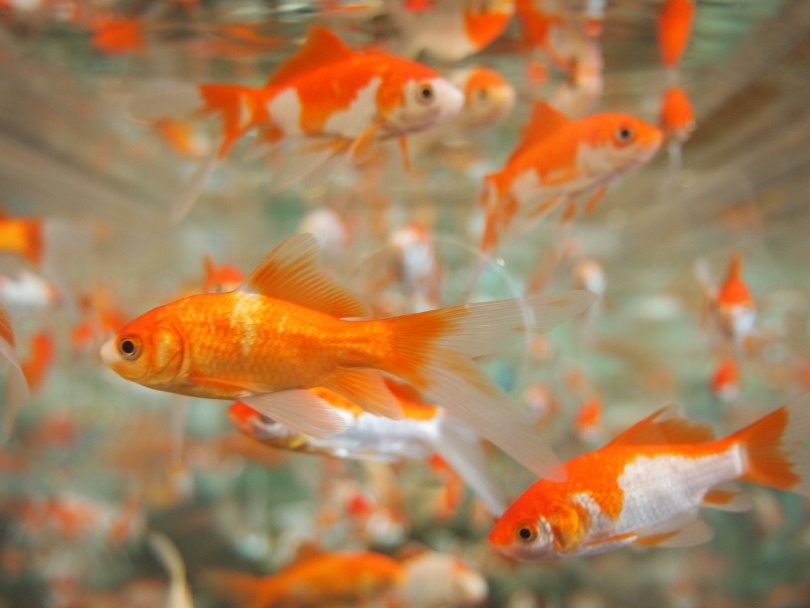
This is a tough one because we’ve been told for so long that there are “rules” related to the size of the tank a goldfish should be kept in. Honestly, there aren’t hard and fast rules, but there are size considerations. Goldfish do produce hormones that are released into the water and stunt growth, which is why many people believe that goldfish will not outgrow their environment. This is somewhat true, but it’s not completely true.
If you go to the store and buy eight 2-inch goldfish for your 10-gallon tank, you’ve overstocked the tank, even though they’re all still small. They will grow and, even with growth stunting, may end up uncomfortable or feeling the need to compete for resources. An overstocked tank is completely doable in a safe, healthy way. It just requires more planning and more dedication to routine tank maintenance to maintain water quality and health. There is such a thing as a truly overstocked tank, though, so make sure your goldfish and other tank residents have space to feel safe and comfortable and that they are all able to get equal access to resources, like food.
5. Under-filtering the Tank
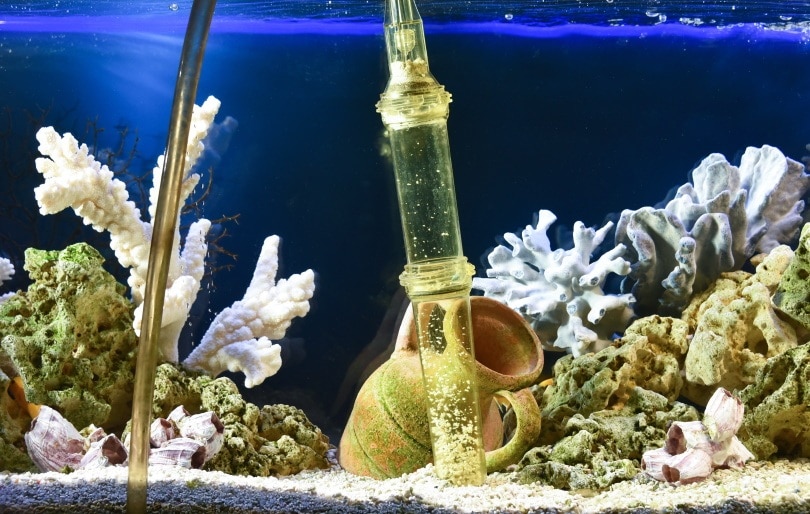
Goldfish are extremely high bioload producers! A single adult goldfish will produce more waste than 10 ember tetras will. There’s a mistake that many people make when choosing tank filtration, and it’s easy to understand why.
If you have a 55-gallon tank and see a filter that’s rated for a 50-gallon tank, you may think “close enough”. When it comes to low bioload producers, you’re probably right. When it comes to goldfish, you’re definitely not right. If you have one or two goldfish in a tank, then your tank should have a filter that is rated for the size of the tank. If you have an overstocked tank, then you need a filter that is rated for a tank larger than the tank you have.
With goldfish, it’s also advisable to have a powerful filter, like a HOB or canister filter, in conjunction with a filter that provides more space for beneficial bacteria, like a sponge filter. You will almost certainly not over-filtrate your tank, but you can easily under-filtrate it! Proper filtration removes visible and microscopic waste products, as well as colonizing beneficial bacteria and aerating the tank water. Seriously, when it comes to under-filtering your tank, just don’t do it. You will regret it!
Understanding the intricacies of water filtration can be tricky, so if you’re a new or even experienced goldfish owner who wants a bit more detailed information on it, we recommend that you check out Amazon for the best-selling book, The Truth About Goldfish.
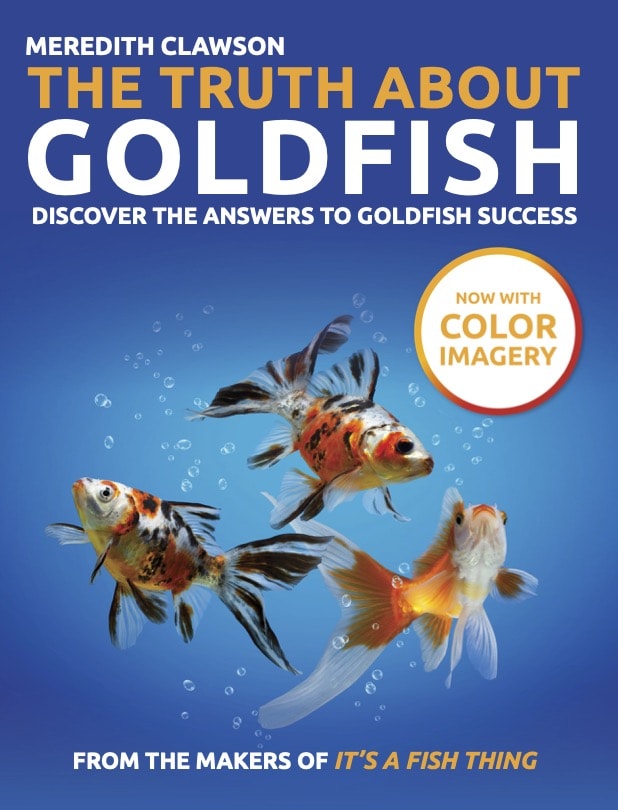
It covers all you need to know about creating the most ideal tank setup, goldfish care, and more!
6. Poor Dietary Decisions

Just like all animals, goldfish require a balanced, nutritionally sound diet. The best base for your goldfish’s diet is commercial goldfish food because these are designed to meet their micronutrient needs. What these foods don’t do is provide variety or balance. They also provide the bare minimum of nutrition, but they don’t necessarily provide satiety. In the wild, goldfish and their cousins, Prussian carp, graze all day on aquatic plants and small animals they come across, like freshwater shrimp. As you can imagine, fish food pellets twice a day don’t satiate your goldfish the same way that grazing would.
Ideally, your goldfish’s food base should be pellets. Flakes are a decent alternative but tend to contain more fillers and fewer nutrients than pellets. Other food options to routinely include in your goldfish’s diet is gel foods, freeze-dried foods, frozen foods, and live foods. Ideally, your goldfish should always have access to fresh veggies and fruits. The best options are leafy green veggies, like romaine lettuce, spinach, arugula, and herbs, but they can also have things like zucchini, butternut squash, cucumber, broccoli, brussels sprouts, bananas, strawberries, and apples. Ideally, high sugar foods, like fruits, and high protein foods, like bloodworms, should be fed sparingly and only as a treat to prevent digestive and swim bladder problems.
7. Improper Tank Maintenance
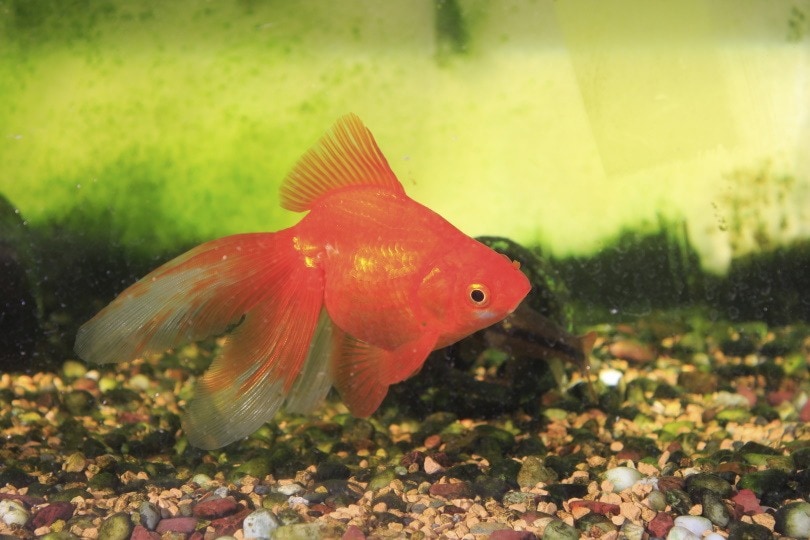
Once your tank is cycled and your goldfish are settled in, you may think that it’s ok to do water changes every couple of months, or even a couple of times annually. Remember the nitrogen cycle? Nitrates will build up in your tank and normal filter media will not remove them. A normal, cycled tank will have some nitrates, with up to 20ppm generally being considered safe but with some people feeling that up to 40ppm is safe.
If you aren’t performing water changes and you don’t have a hundred plants in your tank, then your nitrates likely aren’t going anywhere. This means that they will continue to build up, to the detriment of your tank inhabitants. Routine water changes will help remove these excess nitrates.
Another issue with excess nitrates in your tank? Algae! Algae are a type of plant, so they will absorb nitrates from the water for growth. In a well-balanced tank, your plants are absorbing most of the nitrates and water changes are taking care of the rest. If you aren’t removing the excess nitrates, though, then algae can get a foothold in your tank by consuming the nitrates that your plants aren’t using.
Algae isn’t just unsightly, either. It can grow to a point that it begins to outcompete other plants, choking them out by consuming all the nutrients.
8. Treatment vs Prevention:
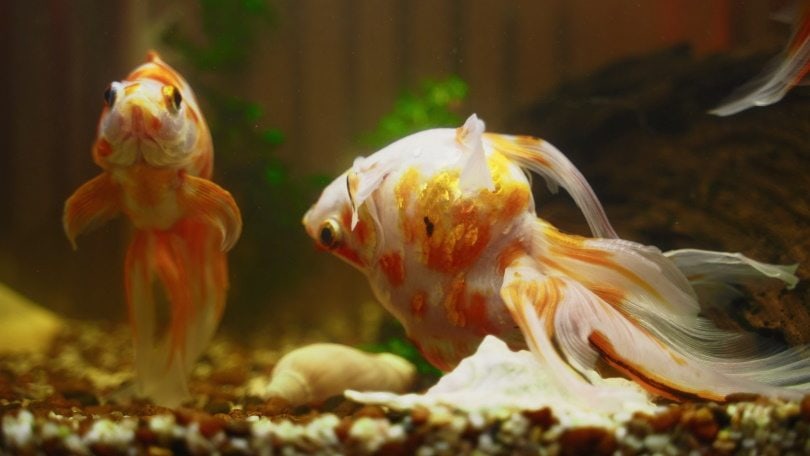
Want to know a not-so-secret secret? The number one cause of illness in goldfish is poor water quality!
Oftentimes, people make the mistake of seeing their goldfish exhibiting symptoms of illness and dosing them with medication. However, treating for illness isn’t going to do any good if your water parameters are off and your water quality is poor. In fact, you’re just adding a stressor into an already stressful environment. Some sickly goldfish don’t even survive treatment with medication, so exposing them to this added stress during a time of illness that can be treated with a simple water change or water treatment can do more harm than good.
It’s also extremely important to keep in mind that drug-resistant bacteria exist. If you start dosing your goldfish with antibiotics they don’t need, or you don’t complete a course of treatment after starting it, you’re increasing the risk for antibiotic resistance. Antibiotic-resistant infections are extremely difficult to treat and even if your fish dies, you still may struggle to get the infectious organism out of your tank. Your best treatment of illness in your goldfish isn’t treatment at all, it’s prevention.
Properly caring for your tank, performing routine water changes, treating the water, and monitoring your parameters are better than any medication.
9. Changing the Filter Media

If you read the instructions that come with your filter, you’ll likely see that the manufacturer recommends replacing filter media or cartridges every few weeks. Diligent goldfish keepers will usually stick to this, unintentionally crashing the tank’s cycle every time. Remember, beneficial bacteria live in the tank’s filter and filter media. This means that every time you replace that filter cartridge, you’re removing a large portion of your beneficial bacteria.
Honestly, your filter media should rarely be replaced. When you do water changes, it’s good practice to rinse it in dirty tank water to remove the “gunk” without killing the beneficial bacteria. If you rinse your filter media in your kitchen sink under hot water, you’re killing your beneficial bacteria.
Most experienced goldfish keepers recommend you replace the filter cartridges with long-lasting filter sponges and ceramic rings or beads that you can rinse from time to time without replacing. This will help you get the most bang for your buck and ensure you aren’t tanking your cycle every few weeks.

In Conclusion
It’s extremely easy to make mistakes as a goldfish keeper. Proper husbandry involves a lot of knowledge and practice, which can take time. Don’t beat yourself up if you realize you’ve been making a mistake. Take the lesson, remedy the problem, and move forward. This isn’t just the best thing you can do for your own mental and emotional health, but it’s the best thing you can do for your goldfish and for the goldfish-keeping community around you.
Featured Image Credit: luckypic, Shutterstock



Không có nhận xét nào